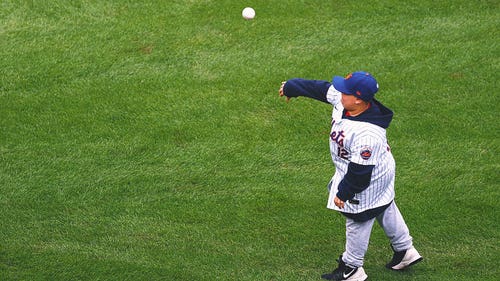
How the Milwaukee Brewers turned from sizzling to fizzling
So, what the heck happened to the Brewers?
There is no easy answer, yet also no reason to talk of this team in past tense. The Crew, for all their recent angst, are 1½ games out in the race for the second National League wild card. They have three games left against the Pirates, the team in current possession of the second spot. And their roster, with the post All-Star break additions of outfielder Gerardo Parra and relievers Jeremy Jeffress and Jonathan Broxton, is the strongest it has been all season.
It’s true that center fielder Carlos Gomez (wrist) and right fielder Ryan Braun (thumb) are less than 100 percent, but no one wants to hear excuses, not when every club is dealing with injuries. The truth is, the Brewers never were as good as their 20-7 start indicated. And they’ve proven it with a classic regression to the mean, going 56-64 since.
The question, of course, is whether the Brewers could have avoided such a dramatic fall, including separate stretches in which they went 1-11 and 1-13 -- stretches that have baffled club officials, and ultimately could endanger manager Ron Roenicke if the team fails to reach the post-season.
The Brewers should not have experienced such lengthy droughts given the depth and quality -- if not star power -- in their starting rotation. And now, because of the severe downturns, they are four games out in the NL Central with 15 to play, after leading the division for 149 straight days.
The reasons are many:
*A fading rotation. Right-hander Mike Fiers, the pitcher who hit the Marlins’ Giancarlo Stanton and then Reed Johnson on Thursday night, has produced a 1.74 ERA in seven starts since returning from Triple A on Aug. 9. Every other Brewers starter has been either injured or inconsistent down the stretch.
Righty Matt Garza was just rounding into form when he missed nearly all of August with a left oblique strain. Righty Kyle Lohse has a 7.86 ERA in his last six starts, and skipped a turn due to a sprained right ankle. Righty Yovani Gallardo also has pitched poorly of late.
Those three veterans, the supposed mainstays of the Brewers’ rotation, will start the next three games against the Reds.
*Lack of plate discipline. Part of the Brewers inconsistency is due to their free-swinging ways. The team sees fewer pitches per plate appearances than any team in the NL, and only two teams in the league have a lower walk rate.
The Brewers aren’t a bad offensive club – they rank fifth in the NL in runs per game – but they’re somewhat dependent upon home runs. They hit 94 in 96 games before the break, the second-highest total in the NL. But prior to hitting two in Thursday night’s 4-2 victory over the Marlins, they had hit only five in 10 games in September. Their current two-game winning streak is their first since Aug. 24-25.
*A taxed bullpen. The Brewers rank near the top of the NL in relief appearances, and Roenicke rode his relievers especially hard early in the season, when the team was playing so many close games. Lefty Will Smith wore down, and only lately has revived. Still, there was no way the bullpen could sustain its April performance, anyway.
The Brewers actually feature fewer hard-throwing relievers than most clubs -- the average fastball velocity in their ‘pen exceeds only that of the Giants in the NL, according to Fangraphs.com (and the Giants, undaunted, again boast one of the top bullpens in the league).
The loss of righty Tyler Thornburg to a season-ending elbow injury left the Brewers thinner, and the team has carried Rule 5 pick Wei-Chung Wang most of the season, limiting Roenicke’s options. The additions of Jeffress and Broxton helped. But closer Francisco Rodriguez has slumped of late, allowing runs in four of his last eight appearances.
*Lack of clubhouse leadership. This one is tricky. No one saw leadership as a problem when the Brewers were 20-7, or when they were still in first place on Aug. 31. But now that the team is struggling, some around the club wonder if this team lacks the fiber of the 2011 Brewers, who won the Central with Prince Fielder and veterans such as Mark Kotsay, Craig Counsell and Jerry Hairston.
Braun certainly isn’t a leader. Gomez does not yet have that type of stature. Third baseman Aramis Ramirez and catcher Jonathan Lucroy are more lead-by-example types. Pitchers such as Lohse, Garza and Gallardo generally lead only pitchers.
Still, few teams are blessed with a Derek Jeter or Torii Hunter. Brewers officials believe that there is sufficient leadership on the club, even from reserves such as Rickie Weeks and Lyle Overbay. The bigger problem, perhaps, is that many of the Brewers’ top players were struggling and/or injured at the same time, and younger players such as left fielder Khris Davis and second baseman Scooter Gennett responded by trying to do too much.
Well, all the Crew can do now is look forward. Fifteen games remain. Owner Mark Attanasio isn’t going to order the firing of Roenicke with 12 games left, the way he did when he dumped Ned Yost in 2008. Attanasio was much less experienced then, and is much less prone to such emotional decisions now.
In a sense, the Brewers are being penalized for over-achieving early in the season; expectations rose, expectations that probably were unfair. But at this point, their mission could not be clearer. Get to the postseason, and all of the questions will go away.
Questions about Roenicke. Questions about clubhouse leadership. Questions about whether this team was little more than an April mirage.





